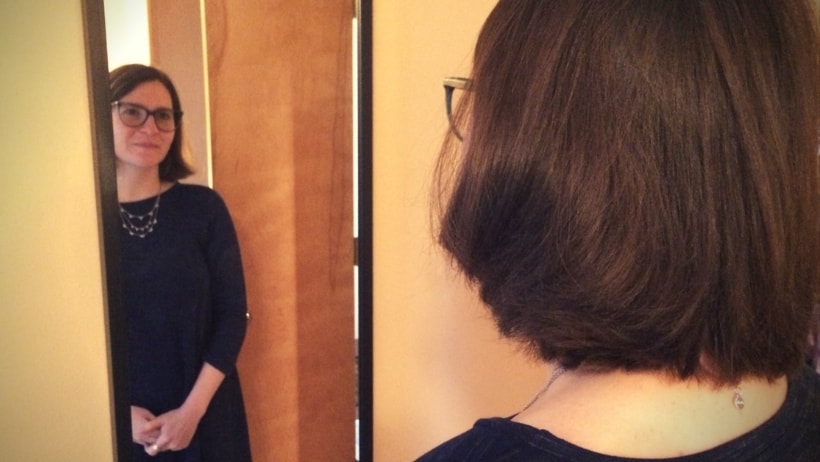I have a love/hate relationship with the mirrors in my house. On the one hand, they serve a helpful purpose, making sure I leave the house looking presentable. No food in my teeth? Check! On the other hand, sometimes all they do is mock me, inviting me to nitpick at my self-perceived imperfections. As a mom of two, I have become extra aware of my obsession with my image, and I work desperately to only model positive self-reflection. However, occasionally I simply can’t help allowing that reflection to be a source of sadness and frustration when the image looking back at me isn’t what I imagined or hoped.

When I think of mirrors, I think of fashion and modern living, but mirrors actually played an essential role not only in the Torah, but in the very existence of Judaism today. This week we read Parshat Ki Tissa, a turning point in the narrative of the Israelite people. We read of the initial census taken after leaving Egypt and of Moshe on top of Mount Sinai. The text contrasts the failures of the Israelites (building the Golden Calf) and the creativity and craftsmanship of the building of the Mishkan by Betzalel and Ohilev. This section of the narrative ends with Moshe descending the mountain as rays of light radiate off of him. Central to the narrative are the materials used to build the Mishkan.
In chapter 30, verse 18 of the Book of Exodus we read, “Make a basin of copper and a stand of copper for it, for washing, and place it between the Tent of Meeting and the altar.” The introduction of copper into the list of construction materials certainly raises the question where did this copper in the middle of the desert come from? According to tradition, these items were fashioned from the bronze mirrors used by the Israelite women in Egypt to make themselves attractive to their husbands. Maybe this comes as no surprise, but it’s interesting to realize that even in the Torah physical attractiveness was essential to intimate relationships.
At first Moshe was upset at the notion of symbols of vanity being used for this purpose; after all, holy spaces should be built on inner strength and dedication instead of a superficial understanding of beauty. But God reminds him that without this “vanity” the Israelite nation never would have flourished.
Parshat Ki Tissa suggests we can achieve a healthy balance in our self-obsession. Inner beauty is our true nature, yet outer beauty in the eyes of a soul mate or even a lifelong friend is often what first attracts us to one another. Even in the midst of Pharaoh’s oppression, the Israelites were able to find the beauty in themselves as a way to persevere. We might not see what we consider perfection every time we look in the mirror, but perhaps we can learn, as Moshe learned from God, to see beyond what is immediately in front of us and look to the future ahead.



